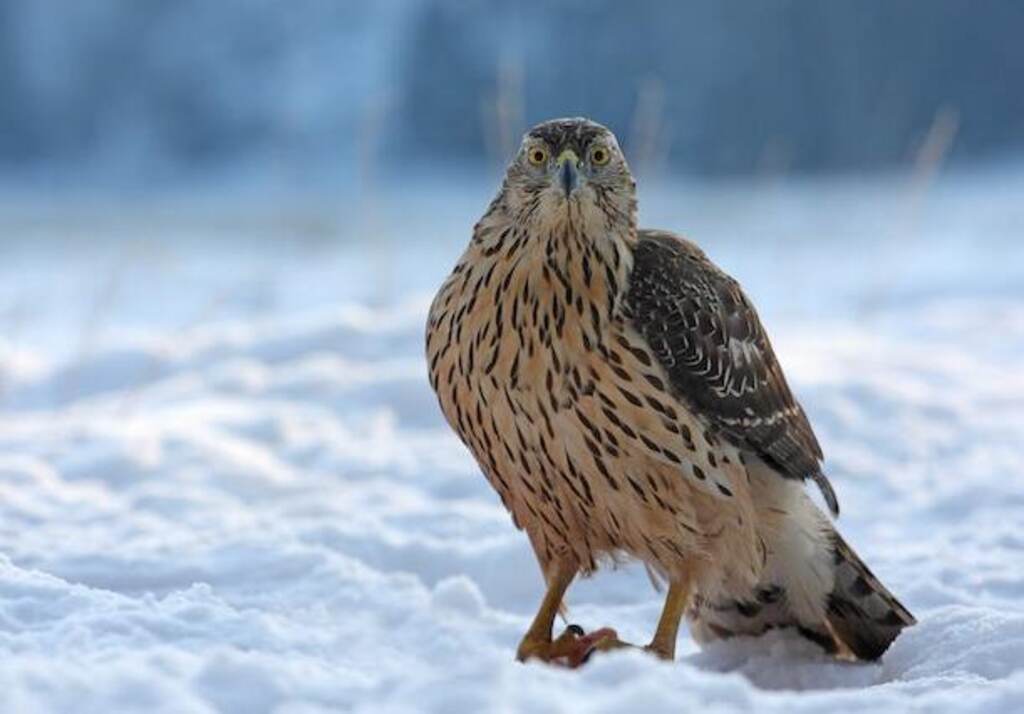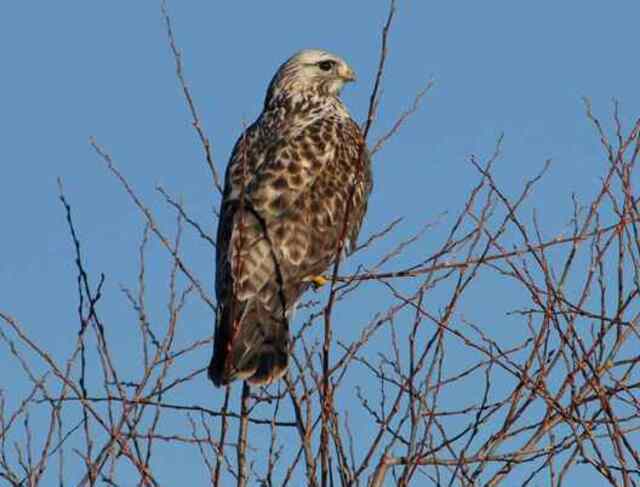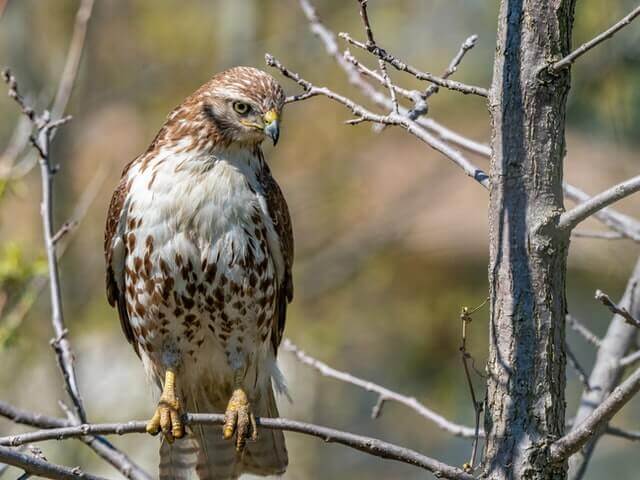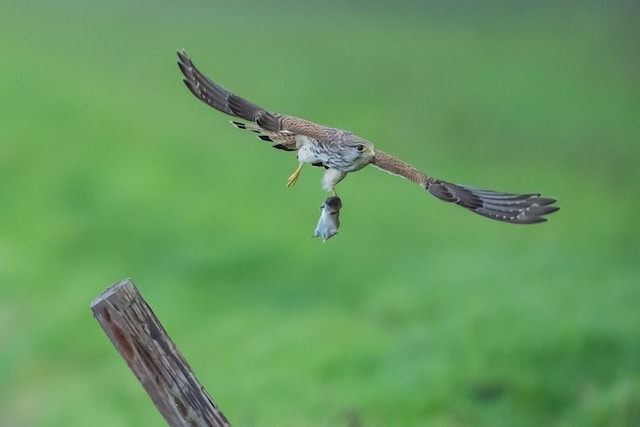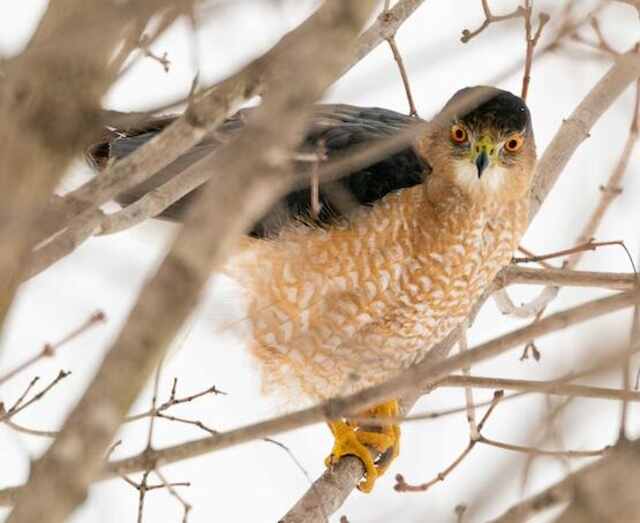Where Are Hawks Found? Get ready to embark on an exhilarating journey through diverse habitats worldwide, from forests and grasslands to deserts and tundras.
Discover the remarkable adaptability of hawks as we unveil their secrets of agility and speed.
With over 270 species, each possessing unique characteristics, we’ll explore their global distribution, migration patterns, and conservation initiatives.
Brace yourself for an awe-inspiring exploration of these majestic hunters and their vital role in maintaining ecosystems.
Table of Contents
Key Takeaways
- Hawks can be found in diverse habitats around the world, from forests and grasslands to deserts and tundras.
- Hawks have adapted to their environment and developed unique characteristics that enable them to survive in their specific habitat.
- Over 80% of North American raptors migrate each year, with migratory patterns influenced by food sources, seasonal changes, and environmental conditions.
- Hawks are found in almost every continent, except for Antarctica, showing their remarkable ability to adapt to different environments.
Where Are Hawks Found?
Hawks are found in diverse habitats worldwide, including forests, grasslands, deserts, and tundras. With over 270 species, they showcase adaptability and grace.
Some are migratory, traveling long distances, while others remain resident. Explore the global distribution of hawks, their remarkable habitats, and their crucial role in maintaining ecosystems.
Overview of Hawks as Birds of Prey
Hawks are recognized as birds of prey, characterized by their sharp talons, powerful beaks, and keen eyesight, which allow them to hunt and capture their prey with great precision.
These physical features make them one of the top predators in the ecosystems they inhabit.
Hawks have a crucial role in maintaining the balance of nature by controlling the populations of smaller animals.
They are also important indicators of the health of an ecosystem, as they are sensitive to changes in their environment.
Hawks have a significant impact on human activities, as they are often seen as a threat to livestock and poultry.
However, they are also valued for their role in keeping rodent populations in check, reducing the need for harmful pesticides.
Understanding the hunting habits and impact of hawks is essential for effective conservation efforts. In the next section, we will explore the different types of hawks and where they can be found.
Types of Hawks
Various species of diurnal birds of prey belong to the family Accipitridae, including but not limited to the Cooper’s hawk, red-tailed hawk, and sharp-shinned hawk.
These birds are known for their sharp talons, hooked beaks, and keen eyesight, which allow them to hunt and feed on smaller birds, mammals, and reptiles.
Hawks are also popular birds for falconry and are kept in captivity for this purpose.
Hawks can lay anywhere from one to five eggs, depending on the species, and the breeding habits of hawks vary depending on the species and their habitat.
Some hawks mate for life, while others mate with multiple partners during breeding season.
Hawks can be found in a variety of habitats, including forests, grasslands, and deserts, and their habitat diversity is a testament to their adaptability as birds of prey.
As we explore the different habitats of hawks, we will gain a deeper understanding of their role in the ecosystem.
Habitat Diversity
The adaptability of diurnal birds of prey is evident in their ability to thrive in a wide range of habitats, including forests, grasslands, and deserts, which highlights the importance of understanding their habitat diversity.
Hawks are essential predators in many ecosystems, playing a crucial role in maintaining the balance of the food chain.
However, habitat loss, climate change, and human activities pose significant threats to their survival.
Therefore, it is crucial to protect and preserve their habitats to ensure the continued existence of these magnificent creatures.
Understanding their habitat diversity and the threats they face is essential to develop conservation strategies that can help mitigate their decline.
In the subsequent section about migratory patterns, we will discuss how hawks move across different habitats and how this knowledge can aid in their conservation.
Migratory Patterns
Migration is a widespread phenomenon among diurnal birds of prey, with over 80% of North American raptors migrating each year, covering thousands of miles in their journey.
Hawks have a wide range of habitat preferences, and their migratory patterns are influenced by their food sources, seasonal changes, and environmental conditions.
Hawks migrate to areas where their prey is abundant, and they follow the same routes year after year.
However, climate change is affecting the migratory patterns of hawks, as changes in temperature and precipitation alter the timing of their migration and food availability.
Some species are staying put in their wintering grounds, while others are shortening their migration distances or shifting their routes.
These changes could have significant effects on hawk populations and their ecosystems.
As we explore the migratory patterns of hawks, we can also learn about the resident hawks that stay in their habitats year-round.
Resident Hawks
Resident hawks are a group of raptors that do not migrate and are found in a specific geographic region throughout the year.
These hawks have adapted to their environment and have developed unique characteristics that enable them to survive in their specific habitat.
Examples of resident hawks include the Red-tailed Hawk, Cooper’s Hawk, and Sharp-shinned Hawk, among others.
Their presence in a particular area plays a crucial role in maintaining the balance of the ecosystem.
Characteristics of Resident Hawks
Typically found in forested areas, hawks are known for their sharp talons and keen eyesight, making them expert hunters of small mammals and birds.
As resident birds, they establish territories for nesting and foraging, with nesting habits that vary depending on the species.
Some hawks build their nests in trees, while others prefer cliffs or rocky outcroppings.
Feeding behavior also varies among species, with some hawks hunting from a perch and others hunting on the wing, diving to catch prey.
Despite their predatory nature, hawks play an important role in maintaining balance in ecosystems.
Examples of resident hawks include the Red-tailed Hawk, the Cooper’s Hawk, and the Sharp-shinned Hawk.
Examples of Resident Hawks
Among the different species of hawks, the Red-tailed Hawk stands out for its distinctive rust-colored tail feathers, which are often used as a key identification feature.
Red-tailed hawks are considered resident hawks, which means that they do not migrate, and they can be found in a variety of habitats throughout North America, including deserts, grasslands, forests, and even urban areas.
They are opportunistic hunters, preying on a variety of small mammals, birds, and reptiles, and they are known for their soaring flight patterns as they search for prey.
Red-tailed hawks often perch on high vantage points such as trees, poles, or rocks, and they use their keen eyesight to spot prey from a distance.
They are also known to hunt cooperatively, with one hawk flushing prey out of hiding while the other swoops in for the kill.
Overall, the Red-tailed Hawk is a fascinating example of a resident hawk with unique habitat preferences and hunting behaviors that have allowed it to thrive in a wide range of environments throughout North America.
Hawks in North America
Hawks are a common sight in North America, with various species found across the continent. From the dense forests of the Pacific Northwest to the open grasslands of the Great Plains, hawks have adapted to a wide range of habitats.
In urban areas, some species such as the Cooper’s hawk have thrived, preying on pigeons and other birds. However, their presence can also have an impact on local ecosystems, as they may disrupt the balance of prey populations.
In the wild, hawks are crucial predators in many ecosystems, hunting and controlling populations of rodents, birds, and other small animals.
Their keen eyesight and sharp talons make them formidable hunters, and they play an important role in maintaining the delicate balance of nature.
As we explore hawks in other regions, we can see how their adaptations and behaviors differ as they face unique challenges and opportunities in different environments.
Hawks in Other Regions
The adaptation of hawk species to different environments has been a subject of interest for researchers, who have studied their behavior and physical characteristics in various regions around the world.
Hawks are found in almost every continent, except for Antarctica.
In South America, the most common hawk species are the Roadside hawk and the White-tailed hawk.
In Africa, the African Harrier-hawk is a common sight, along with the Bateleur and Secretarybird.
In Europe, the Common Buzzard is widespread, while the Sparrowhawk can be found in urban areas.
In Asia, the Crested Goshawk and the Japanese Sparrowhawk are common, along with the Black Kite.
Finally, in Australia, the Black-shouldered Kite and the Brown Goshawk are widely distributed.
The global distribution of hawks shows their remarkable ability to adapt to different environments and habitats.
Understanding their distribution is essential for their conservation, which is crucial to maintaining the delicate balance of ecosystems they inhabit.
Conservation of Hawks
Ensuring the conservation of hawk species is crucial for maintaining the biodiversity and ecological balance of various habitats they inhabit.
Hawks are apex predators and play a vital role in controlling the population of prey species, thereby maintaining a healthy ecosystem.
However, human activities such as urbanization, deforestation, and agricultural practices have resulted in the destruction of hawk habitats and a decline in their populations.
Hawks in human environments are especially vulnerable to electrocution from power lines, collisions with buildings, and poisoning from pesticides.
Climate change is also a significant threat to hawk populations, as it alters the migratory patterns and breeding cycles of these birds.
To conserve hawk species, it is essential to protect their habitats, reduce human-made threats, and conduct research to understand their ecological needs better.
Conservation efforts should also focus on educating the public about the importance of hawks in maintaining ecological balance and promoting sustainable practices that benefit both humans and wildlife.
Frequently Asked Questions
What is the average lifespan of a hawk?
The average lifespan of a hawk ranges from 10 to 20 years, depending on the species. Factors such as habitat, diet, and environmental conditions can influence longevity and aging. Understanding these factors is crucial for conservation efforts and management of hawk populations.
How do hawks communicate with each other?
Hawks communicate with each other through various vocalizations and body language. They use calls and screams to alert others of danger or to establish territories. They also use visual cues such as wing displays and head movements to convey messages.
What types of prey do hawks typically hunt?
Hawks typically hunt small mammals, with rabbits being a common target. They employ various hunting techniques, such as soaring high to spot prey, diving at high speeds, and ambushing from a perch. These techniques ensure successful hunts, providing sustenance for their survival.
Do hawks mate for life?
Hawks exhibit varied mating habits and breeding behaviors, with some species being monogamous while others engage in polygyny or promiscuity. Factors such as habitat, food availability, and competition influence their reproductive strategies.
Can hawks be kept as pets?
Hawks are not suitable as pets due to their aggressive nature, specialized diet, and legal restrictions. In one case, a woman was attacked by her pet hawk. It is illegal to keep hawks without proper permits and training.
Conclusion
Hawks are magnificent birds of prey that can be found in various habitats all over the world. They are known for their sharp talons, keen eyesight, and impressive hunting abilities. Hawks come in different types, each with its unique characteristics and features.
Habitat diversity is one of the reasons why hawks can be found in many places.
They are highly adaptable birds that can thrive in different environments, including forests, grasslands, deserts, and even urban areas.
Some hawks are migratory, meaning they travel long distances to find food and suitable breeding grounds. Others are residents, meaning they stay in one area throughout the year.
In North America, hawks are widespread, with various species found across the continent.
The Red-tailed Hawk is one of the most common hawks in North America, while the Ferruginous Hawk is found primarily in the western part of the continent.
Hawks are also present in other regions, such as Europe, Asia, Africa, and Australia.
However, despite their adaptability, hawks face numerous threats, including habitat loss, illegal hunting, and pollution.
The conservation of hawks is vital to ensure their survival and the preservation of the ecosystems they inhabit.
Therefore, efforts must be made to protect their habitats, enforce laws against hunting, and reduce pollution.
In conclusion, hawks are fascinating birds of prey that can be found in various habitats worldwide. Their adaptability and impressive hunting abilities make them a crucial part of many ecosystems.
It is essential to conserve these magnificent birds to ensure their survival and protect the natural world they inhabit.

